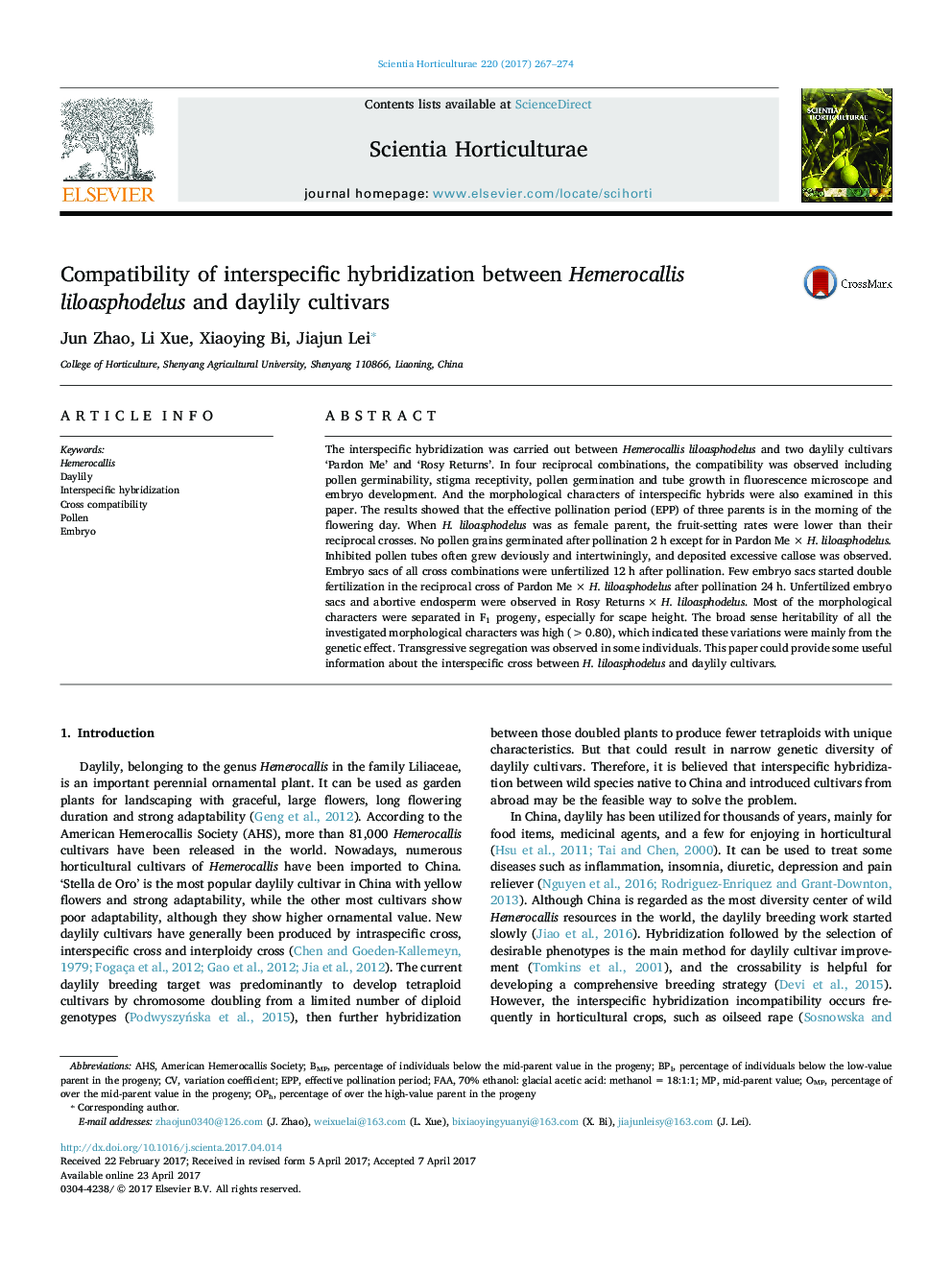| Article ID | Journal | Published Year | Pages | File Type |
|---|---|---|---|---|
| 5769628 | Scientia Horticulturae | 2017 | 8 Pages |
â¢Interspecific crosses were produced between H. liloasphodelus and two daylily cultivars.â¢No pollen grains germinated after pollination 2 h except for in Pardon Me Ã H. liloasphodelus.â¢Inhibited pollen tubes often grew deviously, and deposited callose was observed in tubes.â¢Embryo sacs of all cross combinations were unfertilized after pollination 12 h.â¢Transgressive segregation was observed in some individuals in interspecific hybrids.
The interspecific hybridization was carried out between Hemerocallis liloasphodelus and two daylily cultivars 'Pardon Me' and 'Rosy Returns'. In four reciprocal combinations, the compatibility was observed including pollen germinability, stigma receptivity, pollen germination and tube growth in fluorescence microscope and embryo development. And the morphological characters of interspecific hybrids were also examined in this paper. The results showed that the effective pollination period (EPP) of three parents is in the morning of the flowering day. When H. liloasphodelus was as female parent, the fruit-setting rates were lower than their reciprocal crosses. No pollen grains germinated after pollination 2 h except for in Pardon Me Ã H. liloasphodelus. Inhibited pollen tubes often grew deviously and intertwiningly, and deposited excessive callose was observed. Embryo sacs of all cross combinations were unfertilized 12 h after pollination. Few embryo sacs started double fertilization in the reciprocal cross of Pardon Me Ã H. liloasphodelus after pollination 24 h. Unfertilized embryo sacs and abortive endosperm were observed in Rosy Returns Ã H. liloasphodelus. Most of the morphological characters were separated in F1 progeny, especially for scape height. The broad sense heritability of all the investigated morphological characters was high (>0.80), which indicated these variations were mainly from the genetic effect. Transgressive segregation was observed in some individuals. This paper could provide some useful information about the interspecific cross between H. liloasphodelus and daylily cultivars.
